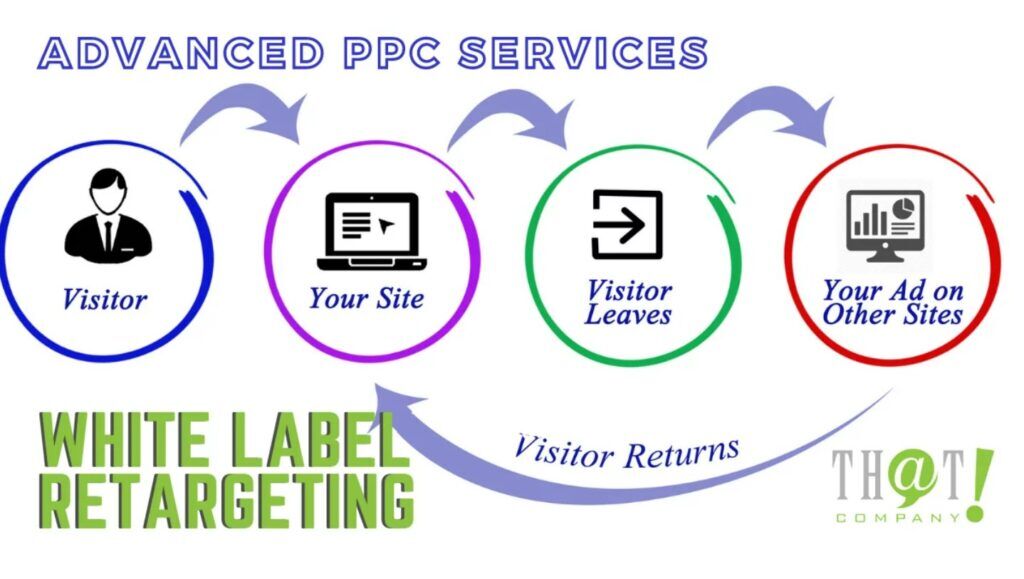
White Label Retargeting is a technique used in White Label PPC. Before you can understand white label retargeting it’s helpful to first understand retargeting as a whole.
Understanding Retargeting
Retargeting (also referred to by Google as Remarketing ads) is a way of advertising online that takes into account what you have looked at or clicked on in the past. This allows companies to place ads on websites and other digital content they know you are likely to look at. The ads appear based on the preferences and interests that were established for each visitor, in order to target people who may not be directly targeting their website. Like most digital advertising, retargeting is not necessarily linked to any payment or purchases done on a website. For instance, if someone watched an ad for a store on YouTube or CNN Headline News, they would still see it when scrolling through their news feeds even if they never went to the store themselves.Recapturing Visitors Using Retargeting
Many companies use retargeting to take in previous website visits in order to place ads to people who may not be actively looking for their product. The goal is to sell more products and reach people that are most likely to buy them, or at least make a purchase.White Label Retargeting is an Extension of Contextual Advertising
Retargeting can be considered an extension of contextual advertising. Contextual advertising allows companies to collect information about someone’s behavior, then provide them with ads based on their previous browsing history, which may indicate what they are interested in or may lead them towards a sale. Retargeting ad formats that are used today include banners, pop-ups, and videos. Banner ads are static ads that appear on a website page and typically take up the entire browser window. Pop-up ads will automatically pop up in a user’s browser window after they click on an advertisement. Video ads will begin playing when a person looks at a video that has an advertisement attached to it. These ads can be more effective at influencing people to make purchases than other forms of digital advertising such as banner ads or mobile ad formats such as text or display ads, because the viewer is seeing the content directly related to what they looked at in the first place.Retargeting may have Higher CPC but Often Lower CPA
White Label Retargeting Captures Lost Ad Spend
Retargeting can be seen as a way to make up for lost ad revenue because some people don’t purchase products after viewing an advertisement. If they do, however, it will be mostly because the company has followed them around the internet with ads. The goal of these retargeting ads is to convince the viewer that their purchase was not a coincidence, but was something they wanted all along and are more likely to make in the future. Retargeting is made possible by advancements in digital advertising technology and a growing market for programmatic advertising. These developments have allowed companies to use retargeting in a wider variety of ways. Advertisers who use retargeting can place “pixel tags” on their website. That pixel tag is a small piece of code that allows a marketer to track and collect information about each user that visits his or her site. This may include information such as the type of computer used, what operating system it has, which browser the user is using, and what site the person last visited. Many websites use cookies for this purpose, but not all do. As a result, a user may not be able to view an advertisement if they have previously clicked on it or visited the site. When this happens, the cookie is removed from the browser and will have to be placed once more in order for it to be seen again.Using Lookalike Audiences is similar to Retargeting
When users visit other websites, they are tracked and retargeted with advertisements that are targeted to their interests based on browsing behavior. This form of demographic targeting allows companies to target specific customers while also using targeted ads in order for visitors to get information about products that may interest them. Retargeting is useful for companies who want to advertise their products but still want users to make purchases on their website. When someone visits a company’s website and doesn’t buy anything, they may continue to see advertisements for that company on other websites that they visit.White Label Retargeting Helps Your Clients Maintain Excellent Results
Learn More About Our White Label PPC Services
White Label PPC Services allow your agency to take full advantage of advanced digital marketing techniques such as Retargeting. We operate under your brand. Learn about our complete line of White Label Services. Are you ready to scale your agency with a quality white label SEO, white label PPC, or white label social media provider?



